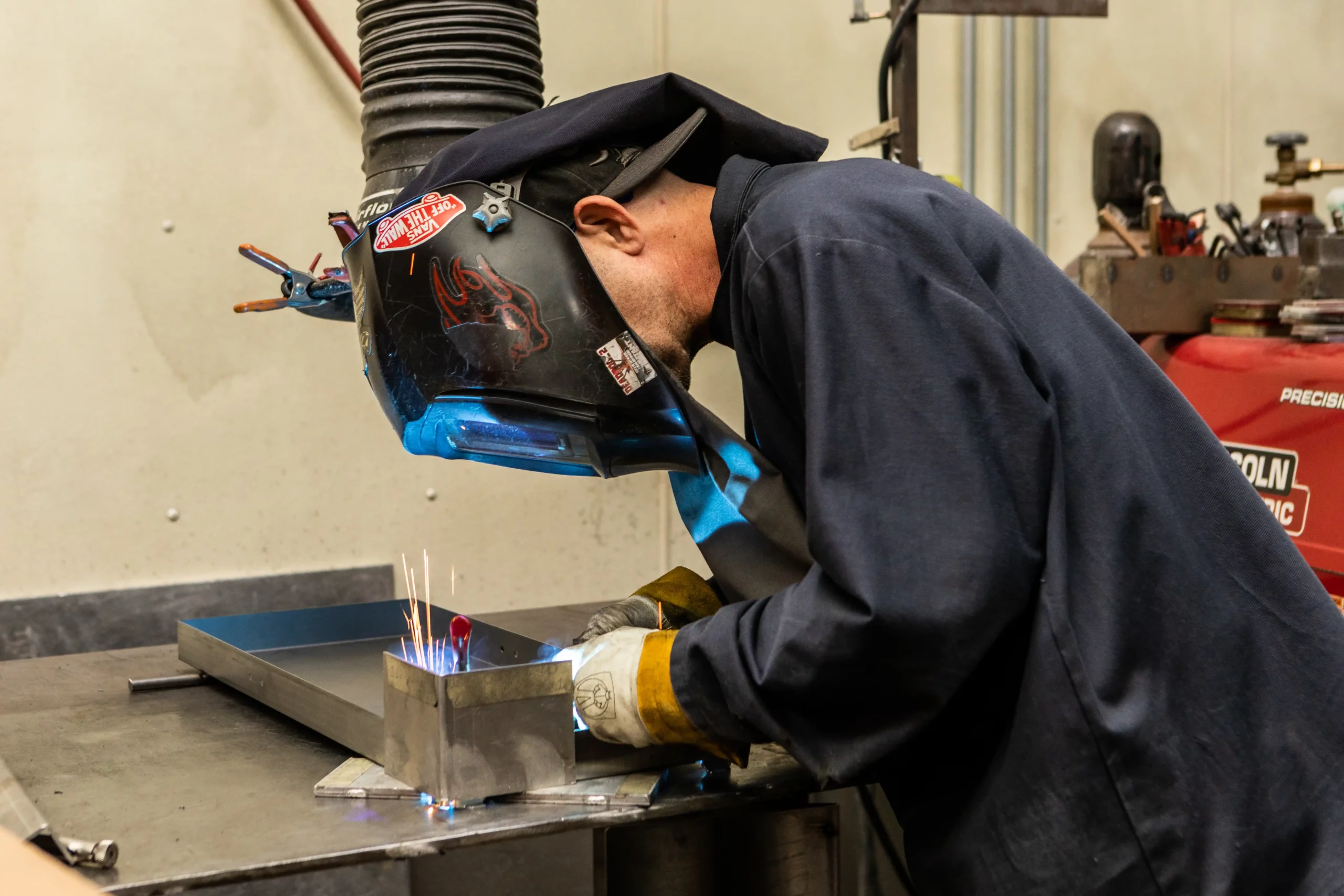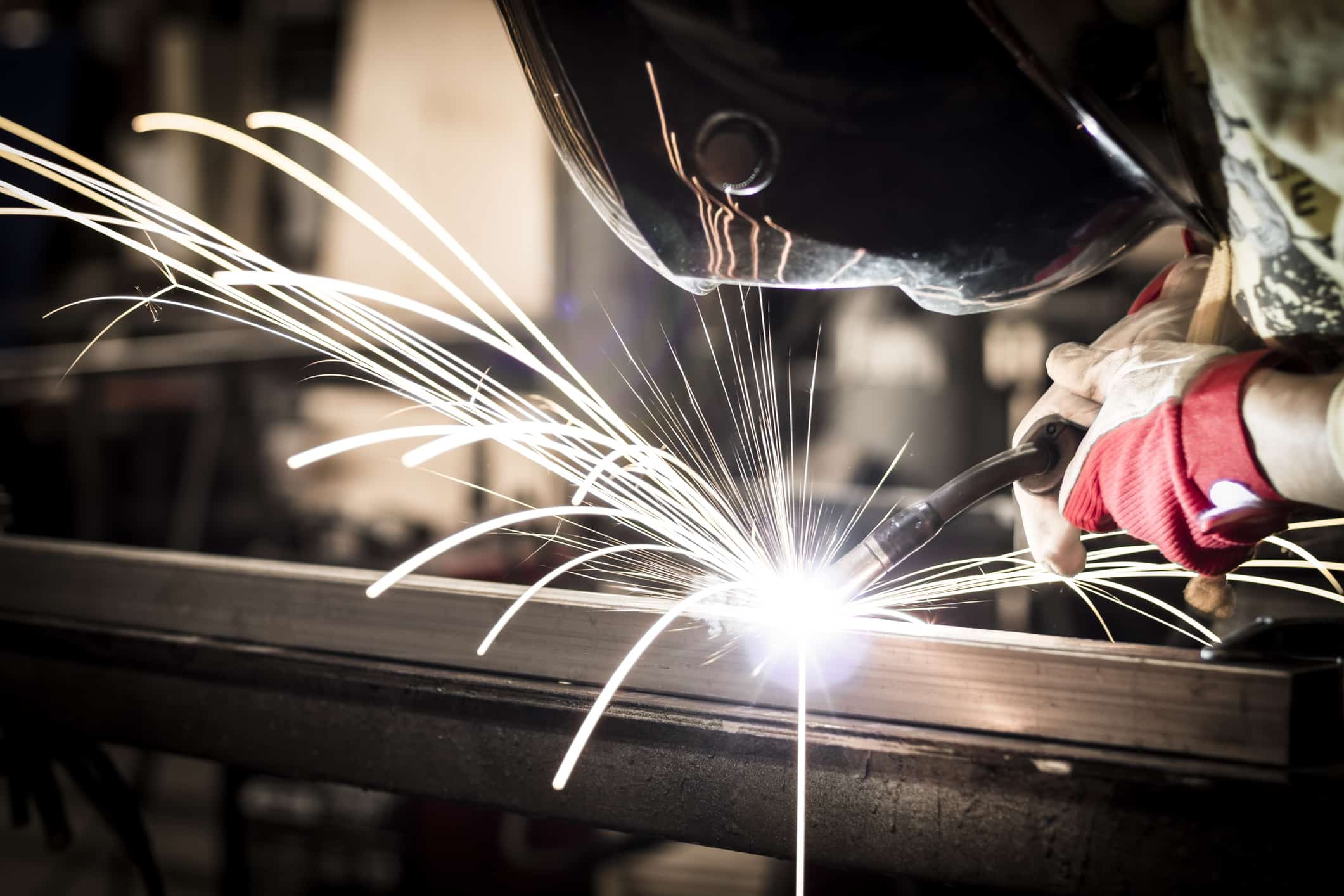Common Welding Repair Service Issues and Just How to Address Them Effectively
Welding repair services typically run into an array of concerns that can threaten the honesty of the end product. Usual problems include inadequate penetration, porosity, and misalignment, amongst others. Each defect presents one-of-a-kind challenges that need details techniques for resolution. Recognizing these concerns is important for welders intending to boost their skills and outcomes. This conversation will explore these usual welding fixing problems and efficient methods to resolve them.
Insufficient Penetration
Inadequate infiltration occurs when the weld steel fails to completely fuse with the base product, resulting in weak joints and possible architectural failures. This problem frequently stems from insufficient warm input, incorrect electrode angle, or improper welding rate. Welders may come across insufficient penetration due to a miscalculation of the essential parameters for a certain product thickness or kind. Additionally, contamination on the base material's surface area can hinder reliable bonding, intensifying the trouble. To attend to inadequate infiltration, welders need to ensure proper settings on their devices and maintain a clean job surface. Normal inspection of welds is advised to recognize any deficiencies early, enabling prompt corrections and the prevention of endangered architectural integrity in bonded settings up.
Porosity
Porosity is a typical defect in bonded joints that materializes as tiny gas bubbles entraped within the weld steel. This issue can compromise the stability of the weld, resulting in lowered strength and prospective failing under stress. Belgrade Fabrication. Porosity generally develops from contamination, dampness, or improper welding techniques, which enable gases to leave into the liquified weld swimming pool. To resolve porosity, welders should ensure proper surface area preparation, keep a tidy functioning environment, and use appropriate welding specifications. Furthermore, choosing the ideal filler product and protecting gas can mitigate gas entrapment. Regular inspection and testing of welds can assist recognize porosity early, guaranteeing timely corrective actions are taken, thereby preserving the quality and reliability of the welded structure
Misalignment
Imbalance in welding can arise from various factors, including improper setup and thermal expansion. Recognizing the origin is important for reliable resolution. Several adjustment methods are offered to realign components and ensure structural honesty.
Reasons of Misalignment
Welding misalignment frequently stems from a selection of underlying concerns that can jeopardize architectural stability. One main cause is inappropriate fit-up of components before welding, which can cause spaces and irregular surfaces. Variants in thermal expansion during the welding process can likewise cause distortion, especially if the products being signed up with have different coefficients of expansion. Additionally, insufficient clamping and fixturing might fail to hold components securely in location, leading to movement throughout welding. Badly kept equipment, consisting of welding equipments and tools, may introduce incongruities in the weld bead, further adding to misalignment. Lastly, driver error, coming from not enough training or experience, can likewise play a considerable role in creating misaligned welds.
Improvement Strategies Readily Available
Resolving imbalance effectively needs a mix of restorative methods tailored to the particular concerns at hand. One usual approach is using jigs or components to hold elements in the right position throughout welding, making certain consistent positioning. In addition, preheating the products can help in reducing distortion and improve fit-up. For significant misalignment, mechanical realignment techniques, such as making use of hydraulic jacks or clamps, can be used to remedy the setting before welding. Post-weld heat therapy might additionally be necessary to eliminate stresses triggered by imbalance. Mindful examination and modification throughout the configuration phase can stop misalignment concerns from coming to be considerable problems, promoting a smoother welding process and enhancing total architectural stability.
Distortion
Distortion is a typical obstacle in welding that can develop from different factors, including irregular cooling and heating. Understanding the sources of distortion is essential for implementing efficient avoidance methods. Resolving this concern not only boosts architectural integrity however also boosts the total quality of the weld.
Root causes of Distortion
When subjected to the intense warm of welding, materials commonly undertake changes that can result in distortion. This phenomenon mainly develops from thermal development and tightening throughout the welding procedure. As the weld location warms up, the material expands; upon cooling, it gets, which can produce inner stresses. Additionally, uneven home heating across a work surface can intensify these anxieties, leading to warping or flexing. The sort of product likewise plays a substantial duty; metals with varying thermal conductivity and coefficients of development might react in different ways, resulting in unpredictable distortions. Poor joint design and insufficient fixturing can contribute to imbalance throughout welding, raising the chance of distortion. Comprehending these causes is crucial for effective welding repair and prevention techniques.
Prevention Techniques
Efficient prevention techniques for distortion throughout welding focus on regulating heat input and guaranteeing appropriate joint layout. Preserving a constant heat input aids to minimize thermal expansion and contraction, which can lead to distortion. Utilizing strategies such as preheating the workpiece can additionally minimize the temperature level gradient, advertising consistent heating. In addition, choosing appropriate joint layouts, such as T-joints or lap joints, can improve stability and reduce tension concentrations. Implementing correct fixturing to safeguard the workpieces in position further help in keeping positioning throughout the welding procedure. Ultimately, staggered welding series can distribute warmth much more equally, avoiding local distortion. By using these strategies, welders can significantly reduce the probability of distortion and boost the general top quality of good welds their welds.
Breaking
Fracturing is a typical problem come across in welding repair work, usually arising from numerous elements such as incorrect cooling rates, product choice, or insufficient joint prep work. The event of splits can substantially endanger the stability of the weld, causing possible failures throughout operation. To resolve this concern, welders need to initially examine the origin causes, guaranteeing that materials are suitable and appropriately picked for the details application. Furthermore, controlling the air conditioning rate throughout the welding process is essential; rapid air conditioning can cause stress and result in cracking. Proper joint style and prep work likewise contribute to minimizing the danger. Executing these methods can improve weld quality and sturdiness, eventually lowering the probability of cracking in completed weldments.

Insufficient Combination
A considerable issue in welding repair work is insufficient combination, which takes place when the weld metal does not sufficiently bond with the base product or previous weld passes - Montana Mobile Welding and Repair. This problem can bring about weaknesses in the joint, possibly compromising the stability of the welded framework. Variables contributing to insufficient blend include inadequate warm input, inappropriate welding technique, and contamination of the surface areas click reference being joined. To resolve this issue effectively, welders should ensure correct pre-weld cleansing and surface preparation, as well as change their welding specifications to achieve ample penetration and blend. Normal evaluation throughout the welding process can additionally assist identify incomplete combination early, permitting timely restorative actions to enhance the overall quality of the weld
Overheating
While welding fixings can enhance structural integrity, overheating presents a substantial challenge that can cause product deterioration. Extreme warmth during welding can change the mechanical buildings of steels, resulting in minimized toughness, increased brittleness, and bending. This phenomenon is particularly crucial in high-stress applications where architectural dependability is extremely important. Recognizing overheating can entail aesthetic evaluations for discoloration or distortion, along with monitoring temperature throughout the welding procedure. To minimize the dangers connected with overheating, welders should employ appropriate strategies, such as managing heat input, readjusting travel speed, and making use of appropriate filler products. In addition, applying pre- and post-weld warm treatments can help restore product residential properties and boost the overall high quality of the repair, ensuring long-term performance and safety.
Frequently Asked Questions
What Are the Common Signs of a Welding Problem?

Just How Can I Examine My Welds for Quality?
To evaluate welds for high quality, one can use visual examinations, ultrasonic screening, and radiographic methods. Each technique guarantees structural stability, recognizes flaws, and confirms adherence to defined requirements, eventually improving the reliability of the bonded joints.
What Safety Precautions Should I Take While Welding?
When welding, one need to focus on safety and security by putting on appropriate personal protective equipment, making certain appropriate ventilation, protecting flammable materials away, maintaining a tidy workspace, and understanding environments to avoid injuries and accidents.
Can I Repair a Weld Without Remodeling the Entire Joint?
Repairing a weld without remodeling the entire joint is possible, depending on the damages (Montana Mobile Welding and Repair Welding). Techniques such as grinding, adding filler product, or utilizing a navigate to this website welding process can effectively address details imperfections while maintaining the bordering framework
What Tools Are Necessary for Efficient Welding Repairs?
Essential devices for effective welding repairs consist of a welding maker, cord brush, mill, safety gear, clamps, and filler products. Each device plays an essential role in making sure high quality and safety during the repair procedure. Porosity commonly arises from contamination, moisture, or improper welding techniques, which allow gases to leave into the molten weld pool. Badly maintained devices, consisting of welding devices and devices, may introduce inconsistencies in the weld grain, further adding to imbalance. When subjected to the intense warmth of welding, materials typically undergo modifications that can lead to distortion. Fracturing is a common problem experienced in welding repair services, often resulting from different aspects such as improper cooling prices, material choice, or poor joint preparation. A considerable concern in welding repair work is insufficient blend, which occurs when the weld steel does not properly bond with the base material or previous weld passes.